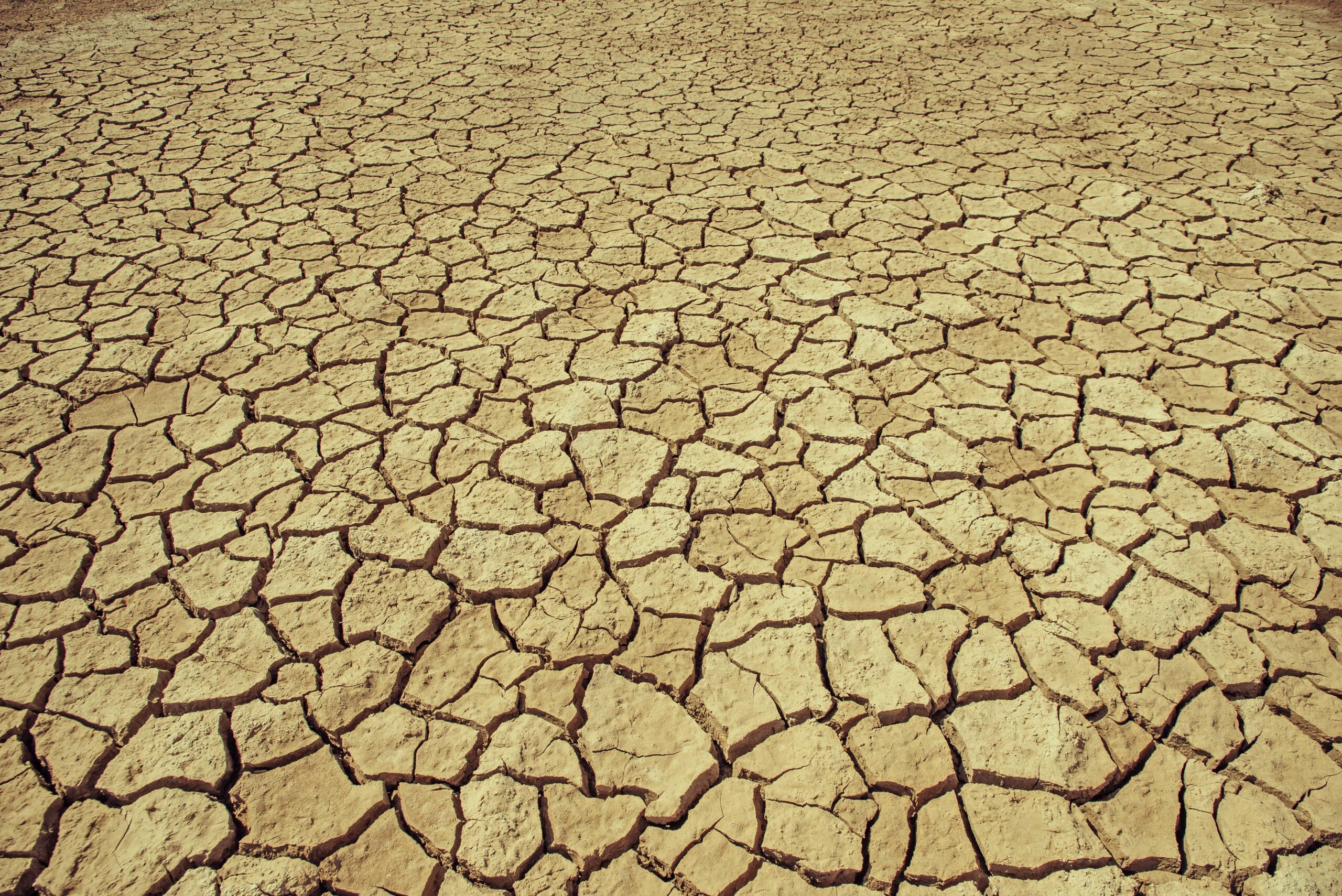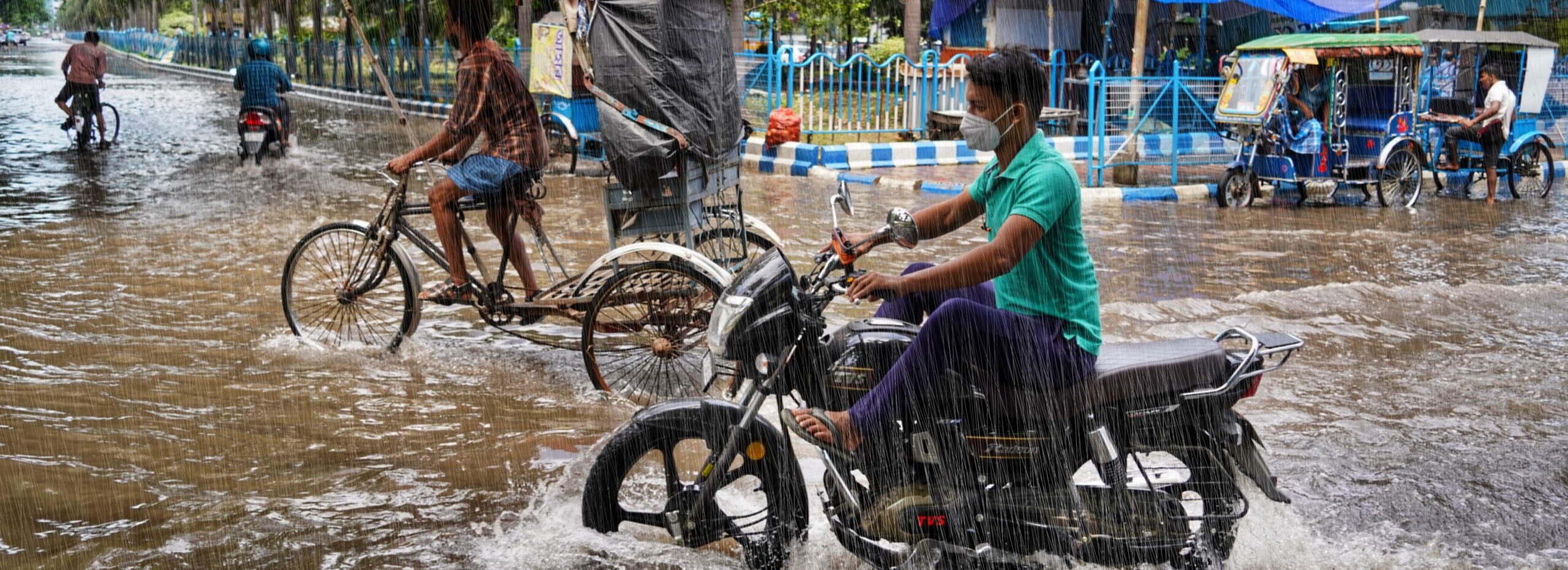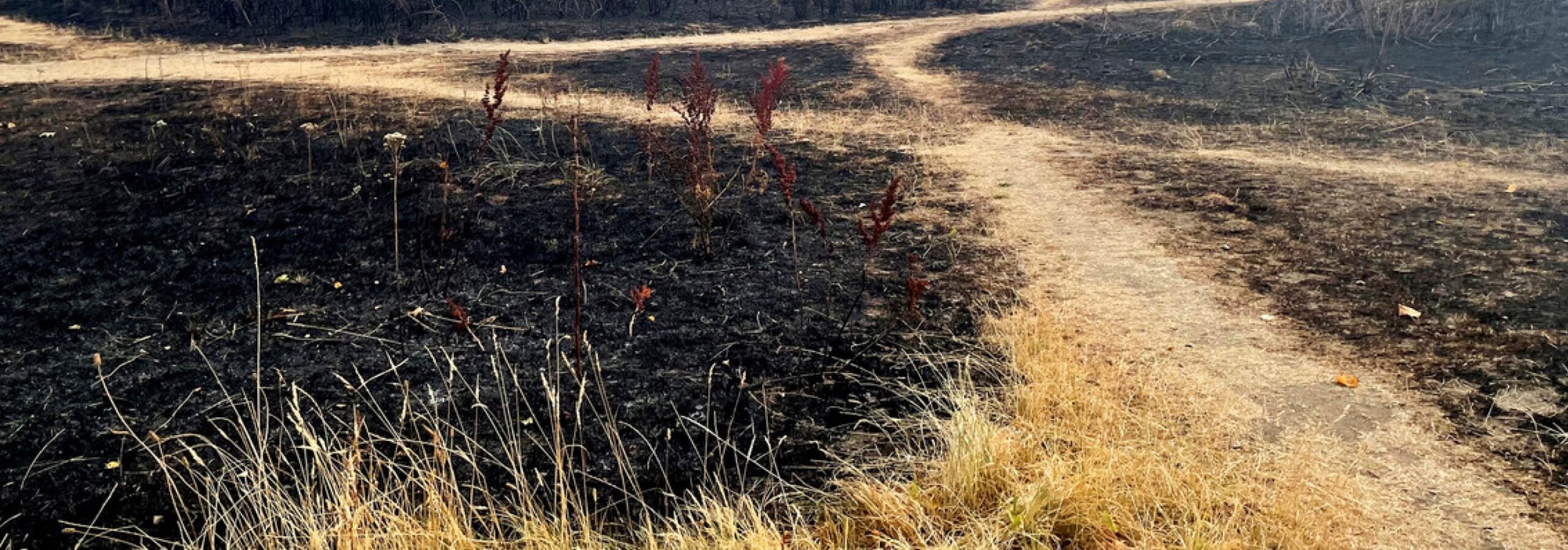All the climate models used in their study show also the likelihood of droughts like the current one going back to 2015, although still very rare, will increase with further warming.
The team looked at data for the Western Cape region which contains the dams and reservoirs providing water for Cape Town and surrounding farmland.
The main factor behind the drought and the consequent water shortage was below-average rainfall rather than surface evaporation caused by high atmospheric temperatures.
Key findings
- Western Cape province in the southwest of South Africa has suffered from three consecutive years (2015-2017) of below average precipitation
- This prolonged rainfall deficit caused an acute water shortage in Cape Town leading to a possibility of “day zero” when the city pipes would run dry
- An international team of scientists with World Weather Attribution used risk-based multi-method approach to examine the role of climate change in this drought event
- While such event today is very rare, with a return time of more than a hundred years, climate change has significantly increased , the likelihood of it by about a factor of three
- While Cape Town has narrowly avoided “day zero” this year all model results suggest that this trend will continue with a similar rate into the future.
The event
The Western Cape province in South Africa experienced overall below average rainfall over the period 2015-2017. This led to the worst drought since 1904 and an unprecedented water shortage in the region (Botai et al. 2017, Wolski 2018). The capital city of the region, Cape Town was particularly affected by this rainfall deficit impacting the area directly surrounding the six large reservoirs that provide fresh water to the city of Cape Town and its ~3.7 million residents. The water crisis was so extreme at the beginning of 2018 that the city of Cape Town was expected to run out of water (“day zero”) in March 2018 (e.g. Welz, A., 1 March 2018, “Awaiting Day Zero: Cape Town Faces an Uncertain Water Future”. Yale Environment 360, USA).
During this Western Cape drought, 30% to 50% below average rainfall in a relatively large region from 35–31ºS and from 18–21ºE persisted for three years (Figure 1, left). The meteorological analysis of the event indicate that below average total rainfall in the region was caused by a strong rainfall anomaly in the shoulder seasons (March-May and August-October), while the core of the rainy winter season (June and July) was characterised by near normal rainfall. While crucial for Cape Town, the reservoirs immediately surrounding the city are part of a larger system of water management in a wide Western Cape region which is well described by the rectangular box over which our analysis is focused (Figure 1, right).

Methodology
We use the standard risk-based multi-method approach to extreme event attribution employing station data, gridded observational dataset, as well as the CIMP5 archive, two coupled climate models and two atmosphere-land models to analyse whether and to what extent anthropogenic climate change altered the likelihood of the 2015-2017 Western Cape drought.
Observational aspect of our analysis relies on 18 meteorological stations of South African Weather Service that have more than 90% of data years in the 1930-2017 and cover the 2015-2017 period. In order to be able to compare models with observations we also utilise the gridded observational dataset CRU TS 4.01 at 0.5° horizontal resolution (it does not include 2017, which was taken from the GPCC dataset).
The return period of the 2015-2017 3-year annual mean precipitation is approximately 150 years for the observed value of 0.72 mm/day. We use the (rounded) 100 year return time event of 3-year mean precipitation in the selected Western Cape region (land area of 31º-35ºS, 18º-21ºE) as event definition, noting that the changes in probability depend only weakly on the return time chosen.
The first model used is the UK Met Office attribution model HadGEM3-A (Christidis et al, 2013). It is an atmosphere-land model with N216 horizontal resolution (about 60km). For this model, we have both historical simulations 1960-2015 driven by observed SST, and historicalNat simulations representing the historical period but with only non-anthropogenic forcings. The SST for these runs has been obtained by subtracting an estimate of the forced change in SST obtained from the mean CMIP5 ensemble response.
The second model is weather@home. Its outputs used here are produced using the distributed computing framework of climateprediction.net system (Guillod et al., 2017). We simulate three different large ensembles (about 100 ensemble members each) using the UK Met Office Hadley Centre’s atmosphere-land global circulation model HadAM3P at N96 horizontal resolution (about 135km). The first ensemble represents possible weather under current climate conditions. This ensemble is called the “actual” scenario and includes observed anthropogenic greenhouse gas and aerosol forcings. The second ensemble represents possible weather in a world as it might have been without anthropogenic climate forcings. This ensemble is called the “natural” scenario (Schaller et al., 2016). The third ensemble represents a future scenario in which the global mean surface air temperature at the end of 21st century is 2°C higher than the preindustrial (Mitchell et al., 2017).
The third model, EC-Earth (Hazeleger et al, 2010), is a coupled atmosphere-ocean model run at a resolution of T159 (about 125km resolution). The version used is EC-Earth 2.3, which is based on the ECMWF seasonal forecasting model system 3. For EC-Earth, continuous simulations from 1860-2015 are used as per the CMIP5 historical setup until 2005 and the RCP8.5 scenario from 2006 (Taylor et al, 2012). The ensemble includes 16 members.
The fourth model is the NCAR-DOE CESM1-CAM5, or short CESM. It is a coupled Earth System Model. We use the 40-member “Large Ensemble” with standard CMIP5 historical and RCP8.5 forcing from 1920 to 2100 (Kay et al., 2014). To test the robustness of our finding to the choice of scenario used for the last ten years (post-2005), we also use the same ten years from a 15-member ensemble run under RCP4.5. The ensemble initializes its members at 1920. Historical forcings estimated from observations are applied until 2005, and from the following year forcings according to RCP8.5 or RCP4.5 are used. The model is concentration-driven, with a nominal horizontal resolution of about 1 degree.
The CMIP5 ensemble is a multi-model ensemble of opportunity that constitutes the basis for most future projections featured in the IPCC Fifth Assessment report (IPCC, 2013). The resolution of the models ranges from 0.75º to 3.75º with a median of 2.5º, so the study region encompasses just two grid points in most models. We use the historical simulations 1861-2005, extended with RCP4.5 simulations 2006-2017, for which 42 models are available.
Results
Using the methods and models described above we calculate the risk ratios for a change of the 1 in 100 year event with respect to a world that might have been without climate change as well as how the likelihood of such an event could change in a world 2°C warmer than pre-industrial, 1°C warmer than today.
The overall results are in good agreement with respect to the sign and significance of the change in probability towards an increased risk of such an event with anthropogenic forcing. Combining the observational analysis as well as the models and using a simple average to synthesise the results, the change in the likelihood of an event like the observed 2015-2017 drought has increased by a factor of 3.3 (1.4 to 6.4). This is a very clear result with anthropogenic climate change having significantly increased the likelihood of such a drought to occur (Figure 2, top).
In addition to the attribution analysis we also assess how the likelihood of the same event occurring is changing in the future under an additional degree of global warming, leading to a 2 degree warming relative to pre-industrial. In all available models with the future scenario the probability ratio increase further by a factor very comparable to the ratio of increase resulting from the degree of warming up to today, suggesting that drought risk in this area scales linearly with warming, at least for warming up to 2°C (Figure 2, bottom).

Vulnerability and exposure
In addition to the changing hazard, exposure (the presence of people, livelihoods, infrastructure, and economic and social assets in places that could be affected by extreme events) and vulnerability (the propensity or predisposition for those people or assets to be affected) are key elements of determining risk. The Western Cape Water Supply System consists of 14 dams and pipelines managed by the City of Cape Town and the National Department of Water and Sanitation. The system is almost entirely dependent on rainfall, making it highly vulnerable to climate variability and change. Although the system was designed to provide sufficient water storage to mitigate droughts with a return interval of 1 in 50 years, this study shows that the return time of extreme droughts has changed due to climate change, leaving the system and the people it serves more vulnerable to drought risks than previously anticipated.
Droughts in South Africa affect both the local and national economy, by adding pressure to the nation’s agro-economic system, including increased unemployment, negative impacts on upstream economic activities and production loss over several years (Baudoin et al., 2017). The agricultural sector is a key formal and informal employer in the Western Cape and provides inputs for other industry such as agri-processing.
While Cape Town’s population continues to grow, the City has been internationally recognised for its water conservation and demand management practices which have stabilized water demand growth to around 2% per annum. However, this hasn’t been sufficient to avoid the impacts of the current drought due, in part, to changing risks and tends to have a disproportionate negative impact on poorer households (Mahlanza et al., 2016). In addition to increasing water efficiency, and implementing water restrictions and tariffs to manage demand, the City explored options for augmenting the water supply (e.g. desalination plants), but these are not anticipated to significantly augment water supply until at least 2019.
Given the increasing risk of this type of event, and the vulnerability and exposure context, this study underscores the need for serious consideration for Cape Town’s resilience to current and future drought risk in water management planning.
Manuscript was submitted June 2018 to the Environmental Research Letters, an open access journal.
References
Baudoin, M-A, C. Vogel, K. Nortje and M. Naik. (2017) Living with drought in South Africa: lessons learnt from the recent El Niño drought period. International Journal of Disaster Risk Reduction, 23: 128-137. doi: 10.1016/j.ijdrr.2017.05.005
Botai, C.M., Botai, J.O., de Wit, J.P., Ncongwane, K.P. and Adeola, A.M. (2017) Drought characteristics over the Western Cape Province, South Africa. Water, 9: 876. doi: 10.3390/w9110876
Christidis, N., P.A. Stott, A.A. Scaife, A. Arribas, G.S. Jones, D. Copsey, J.R. Knight, and W.J. Tennant. (2013) A new HadGEM3-A-Based system for attribution of weather- and climate-related extreme events. Journal of Climate, 26: 2756–2783. doi: 10.1175/JCLI-D-12-00169.1
Guillod, B. P. (2017) weather@home 2: validation of an improved global–regional climate modelling system. Geoscientific Model Development, 10: 1849-1872. doi: 10.5194/gmd-10-1849-2017
Hazeleger, W., C. Severijns, T. Semmler, S. Ştefănescu, S. Yang, X. Wang, K. Wyser, E. Dutra, J.M. Baldasano, R. Bintanja, P. Bougeault, R. Caballero, A.M. Ekman, J.H. Christensen, B. van den Hurk, P. Jimenez, C. Jones, P. Kållberg, T. Koenigk, R. McGrath, P. Miranda, T. Van Noije, T. Palmer, J.A. Parodi, T. Schmith, F. Selten, T. Storelvmo, A. Sterl, H. Tapamo, M. Vancoppenolle, P. Viterbo, and U. Willén. (2010) EC-Earth: A seamless Earth-system prediction approach in action. Bulletin of the American Meteorological Society, 91: 1357–1363. doi: 10.1175/2010BAMS2877.1
Kay, J.E., Deser, C., Phillips, A., Mai, A., Hannay, C., strand, G., Arblaster, J.M., Bates, S.C., Danabasoglu, G., Edwards, J., Holland, M., Kushner, P., laMarque, J-F., Lawrence, D., Lindsay, K, Middleton, A., Munoz, E., Neale, R., Oleson, K., Polvani, L and Vertenstein, M. (2014) The Community Earth System Model (CESM) large ensemble project: a community resource for studying climate change in the presence of internal climate variability. Bulletin of the American Meteorological Society, 96: 1333–1349. doi: 10.1175/BAMS-D-13-00255.1
Mahlanza, L., Ziervogel, G., & Scott, D. (2016) Water, rights and poverty: an environmental justice approach to analysing water management devices in Cape Town. Urban Forum, 27(4): 363–382. doi: 10.1007/s12132-016-9296-6
Mitchell, D., AchutaRao, K., Allen, M., Bethke, I., Beyerle, U., Ciavarella, A., Forster, P. M., Fuglestvedt, J., Gillett, N., Haustein, K., Ingram, W., Iversen, T., Kharin, V., Klingaman, N., Massey, N., Fischer, E., Schleussner, C.-F., Scinocca, J., Seland, Ø., Shiogama, H., Shuckburgh, E., Sparrow, S., Stone, D., Uhe, P., Wallom, D., Wehner, M., and Zaaboul, R. (2017) Half a degree additional warming, prognosis and projected impacts (HAPPI): background and experimental design. Geoscientific Model Development, 10: 571-583, doi: 10.5194/gmd-10-571-2017
Schaller, N., Kay, A.L., Lamb, R., Massey, N.R., van Oldenborgh, G.J., Otto, F.E.L., Sparrow, S.N., Vautard, R., Yiou, P., Bowery, A., Crooks, S.M., Huntingford, C., Ingram, W.J., Jones, R.G., Legg, T., Miller, J., Skeggs, J., Wallom, D., Weisheimer, A., Wilson, S. and Allen, M.R. (2016) The human influence on climate in the winter 2013/2014 floods in southern England. Nature Climate Change, 6, 627–634. doi: 10.1038/nclimate2927
Taylor, K. E., R. J. Stouffer, and G. A. Meehl. (2012) An overview of CMIP5 and the experiment 962 design. Bulletin of the American Meteorological Society, 93: 485–498. doi: 10.1175/BAMS-D-11-00094.1
Wolski, P. (2018) How severe is Cape Town’s “Day Zero” drought? Significance, 15: 24-27 doi: 10.1111/j.1740-9713.2018.01127.x





